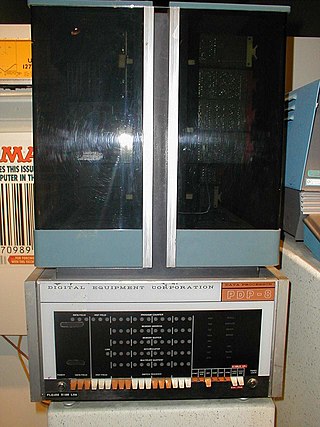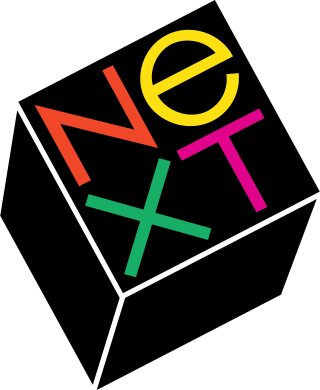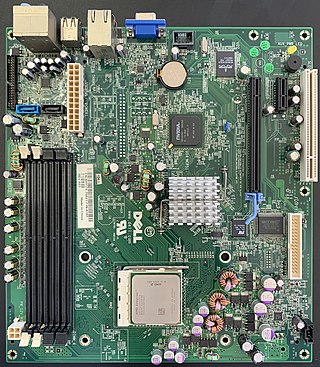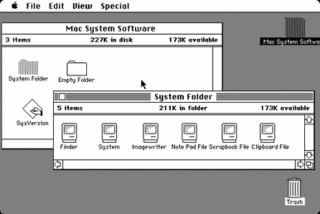Richard Page is an alumnus of Apple Inc. He was an Apple Fellow at Apple Computer in the 1980s, and later joined Steve Jobs at NeXT.
Rich was one of the first four Apple Fellows. He was awarded the Apple Fellow position for his efforts in graphics software development tools including compilers and hardware development. As an Apple Fellow, Rich prototyped Apple's first portable, color and 68020 based Macintosh computers. He was responsible for the decision to use the Motorola MC68000 family of microprocessors for Apple's Lisa and Macintosh computers and was instrumental in the initial design of the Lisa.
Rich was the second Fellow at Rambus contributing to lighting, RRAM and new memory technologies.
Rich was President and founder of Next Sierra. Next Sierra was a fabless semiconductor company which developed display drivers for active matrix OLED.
Rich Page was President and Founder of Sierra Research and Technology, Inc. Sierra provided 622M ATM, 10/100 Ethernet and Giga-bit Ethernet designs to more than 50 semiconductor and system companies. Sierra also provided a number of custom designs for large system companies. Sierra was acquired by TDK Semiconductor in 2000 to substantially expand TDK's networking engineering team.
Before founding Sierra, Rich was a co-founder and the Vice President of Hardware Engineering at NeXT Computer, Inc. He led the development of the Cube, NeXTstation and Turbo NeXTstation products. Later Rich became the general manager of the NeXT Hardware Division which included design engineering, materials management, manufacturing, service, order management and distribution.
In 1992, Rich Page left NeXT. Within weeks of his resignation, several NeXT VPs also left.
His experience in hardware and software design includes the development of microcode for Hewlett-Packard's HP 3000 minicomputer series. The HP3000 minicomputer is still in use today. At Fairchild Semiconductor, Rich developed test programs for Fairchild's microprocessors, memory products and custom chips.
Rich is chairman of the board at Chowbotics Inc, a start-up building food robotics products. The first product is Sally, a salad making robot.

A minicomputer, or colloquially mini, is a class of smaller general purpose computers that developed in the mid-1960s and sold at a much lower price than mainframe and mid-size computers from IBM and its direct competitors. In a 1970 survey, The New York Times suggested a consensus definition of a minicomputer as a machine costing less than US$25,000, with an input-output device such as a teleprinter and at least four thousand words of memory, that is capable of running programs in a higher level language, such as Fortran or BASIC.

NeXT, Inc. was an American technology company that specialized in computer workstations intended for higher education and business use. Based in Redwood City, California, and founded by Apple Computer co-founder and CEO Steve Jobs after he was forced out of Apple, the company introduced their first product, the NeXT Computer, in 1988, and then the smaller NeXTcube and NeXTstation in 1990. These computers had relatively limited sales, with only about 50,000 units shipped in total. Nevertheless, their object-oriented programming and graphical user interfaces were trendsetters of computer innovation, and highly influential.

NeXTSTEP is a discontinued object-oriented, multitasking operating system based on the Mach kernel and the UNIX-derived BSD. It was developed by NeXT Computer in the late 1980s and early 1990s and was initially used for its range of proprietary workstation computers such as the NeXTcube. It was later ported to several other computer architectures.

A microcomputer is a small, relatively inexpensive computer having a central processing unit (CPU) made out of a microprocessor. The computer also includes memory and input/output (I/O) circuitry together mounted on a printed circuit board (PCB). Microcomputers became popular in the 1970s and 1980s with the advent of increasingly powerful microprocessors. The predecessors to these computers, mainframes and minicomputers, were comparatively much larger and more expensive. Many microcomputers are also personal computers. An early use of the term personal computer in 1962 predates microprocessor-based designs. (See "Personal Computer: Computers at Companies" reference below). A microcomputer used as an embedded control system may have no human-readable input and output devices. "Personal computer" may be used generically or may denote an IBM PC compatible machine.

Computer engineering is a branch of electrical engineering and computer science that integrates several fields of computer science and electronic engineering required to develop computer hardware and software. Computer engineers not only require training in electronic engineering, software design, and hardware-software integration, but also in software engineering. It uses the techniques and principles of electrical engineering and computer science, but also covers areas such as artificial intelligence (AI), robotics, computer networks, computer architecture and operating systems. Computer engineers are involved in many hardware and software aspects of computing, from the design of individual microcontrollers, microprocessors, personal computers, and supercomputers, to circuit design. This field of engineering not only focuses on how computer systems themselves work, yet it also demands them to integrate into the larger picture. Robots are one of the applications of computer engineering.
NeXT Computer is a workstation computer that was developed, marketed, and sold by NeXT Inc. It was introduced in October 1988 as the company's first and flagship product, at a price of US$6,500, aimed at the higher-education market. It was designed around the Motorola 68030 CPU and 68882 floating-point coprocessor, with a clock speed of 25 MHz. Its NeXTSTEP operating system is based on the Mach microkernel and BSD-derived Unix, with a proprietary GUI using a Display PostScript-based back end. The enclosure consists of a 1-foot die-cast magnesium cube-shaped black case, which led to the machine being informally referred to as "The Cube".

Taligent Inc. was an American software company. Based on the Pink object-oriented operating system conceived by Apple in 1988, Taligent Inc. was incorporated as an Apple/IBM partnership in 1992, and was dissolved into IBM in 1998.
Tandem Computers, Inc. was the dominant manufacturer of fault-tolerant computer systems for ATM networks, banks, stock exchanges, telephone switching centers, 911 systems, and other similar commercial transaction processing applications requiring maximum uptime and zero data loss. The company was founded by Jimmy Treybig in 1974 in Cupertino, California. It remained independent until 1997, when it became a server division within Compaq. It is now a server division within Hewlett Packard Enterprise, following Hewlett-Packard's acquisition of Compaq and the split of Hewlett Packard into HP Inc. and Hewlett Packard Enterprise.

The history of computing hardware starting at 1960 is marked by the conversion from vacuum tube to solid-state devices such as transistors and then integrated circuit (IC) chips. Around 1953 to 1959, discrete transistors started being considered sufficiently reliable and economical that they made further vacuum tube computers uncompetitive. Metal–oxide–semiconductor (MOS) large-scale integration (LSI) technology subsequently led to the development of semiconductor memory in the mid-to-late 1960s and then the microprocessor in the early 1970s. This led to primary computer memory moving away from magnetic-core memory devices to solid-state static and dynamic semiconductor memory, which greatly reduced the cost, size, and power consumption of computers. These advances led to the miniaturized personal computer (PC) in the 1970s, starting with home computers and desktop computers, followed by laptops and then mobile computers over the next several decades.
Jean-Louis Gassée is a business executive. He is best known as a former executive at Apple Computer, where he worked from 1981 to 1990. He also founded Be Inc., creators of the BeOS computer operating system. After leaving Be, he became Chairman of PalmSource, Inc. in November 2004.
CodeWarrior is an integrated development environment (IDE) published by NXP Semiconductors for editing, compiling, and debugging software for several microcontrollers and microprocessors and digital signal controllers used in embedded systems.

Automatix Inc., founded in January 1980, was the first company to market industrial robots with built-in machine vision. Its founders were Victor Scheinman, inventor of the Stanford arm; Phillippe Villers, Michael Cronin, and Arnold Reinhold of Computervision; Jake Dias and Dan Nigro of Data General; Gordon VanderBrug, of NBS, Donald L. Pieper of General Electric and Norman Wittels of Clark University.
Signetics Corporation was an American electronics manufacturer specifically established to make integrated circuits. Founded in 1961, they went on to develop a number of early microprocessors and support chips, as well as the widely used 555 timer chip. The company was bought by Philips in 1975 and incorporated in Philips Semiconductors.
Commodity computing involves the use of large numbers of already-available computing components for parallel computing, to get the greatest amount of useful computation at low cost. It is computing done in commodity computers as opposed to in high-cost superminicomputers or in boutique computers. Commodity computers are computer systems - manufactured by multiple vendors - incorporating components based on open standards.

Apple Inc., originaly named Apple Computer, Inc., is a multinational corporation that creates and markets consumer electronics and attendant computer software, and is a digital distributor of media content. Apple's core product lines are the iPhone smartphone, iPad tablet computer, and the Macintosh personal computer. The company offers its products online and has a chain of retail stores known as Apple Stores. Founders Steve Jobs, Steve Wozniak, and Ronald Wayne created Apple Computer Co. on April 1, 1976, to market Wozniak's Apple I desktop computer, and Jobs and Wozniak incorporated the company on January 3, 1977, in Cupertino, California.

Jonathan J. "Jon" Rubinstein is an American electrical engineer who played an instrumental role in the development of the iMac and iPod, the portable music and video device first sold by Apple Computer Inc. in 2001. He left his position as senior vice president of Apple's iPod division on April 14, 2006.

The history of the personal computer as a mass-market consumer electronic device began with the microcomputer revolution of the 1970s. A personal computer is one intended for interactive individual use, as opposed to a mainframe computer where the end user's requests are filtered through operating staff, or a time-sharing system in which one large processor is shared by many individuals. After the development of the microprocessor, individual personal computers were low enough in cost that they eventually became affordable consumer goods. Early personal computers – generally called microcomputers – were sold often in electronic kit form and in limited numbers, and were of interest mostly to hobbyists and technicians.

Two major families of Mac operating systems were developed by Apple Inc.
The following outline of Apple Inc. is a topical guide to the products, history, retail stores, corporate acquisitions, and personnel under the purview of the American multinational corporation Apple Inc.
The TENET 210 was a mainframe computer designed for timesharing services. The machine was designed for high throughput and expandability, including 20 direct memory access (DMA) channels and eight slots for core memory, allowing up to 128k 32-bit words of RAM. The sales materials boasted that it guaranteed user responses within one second.











